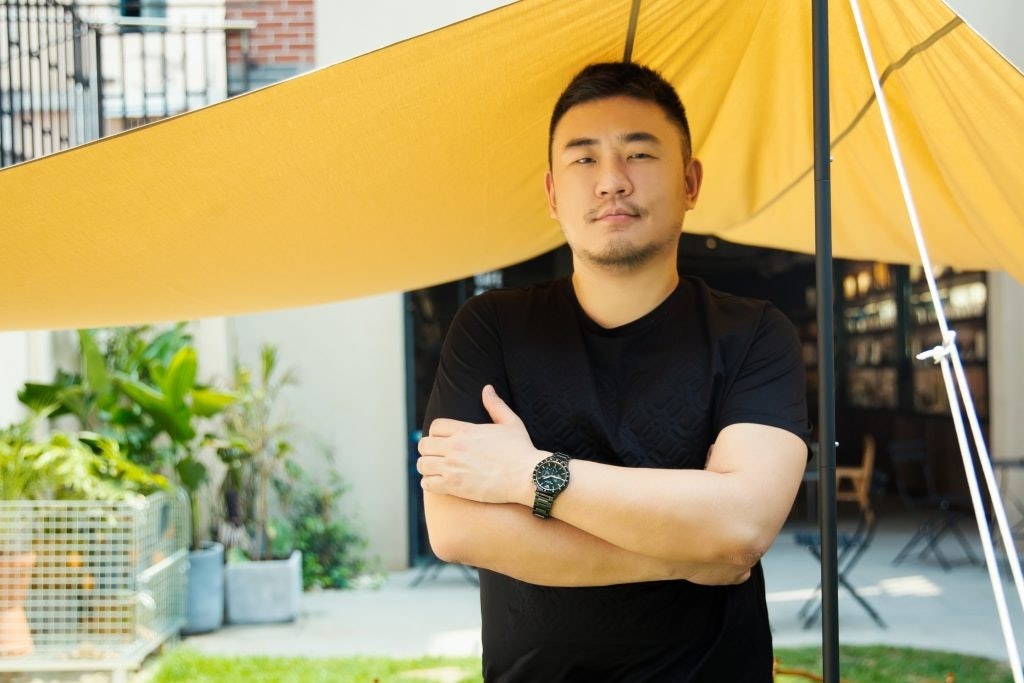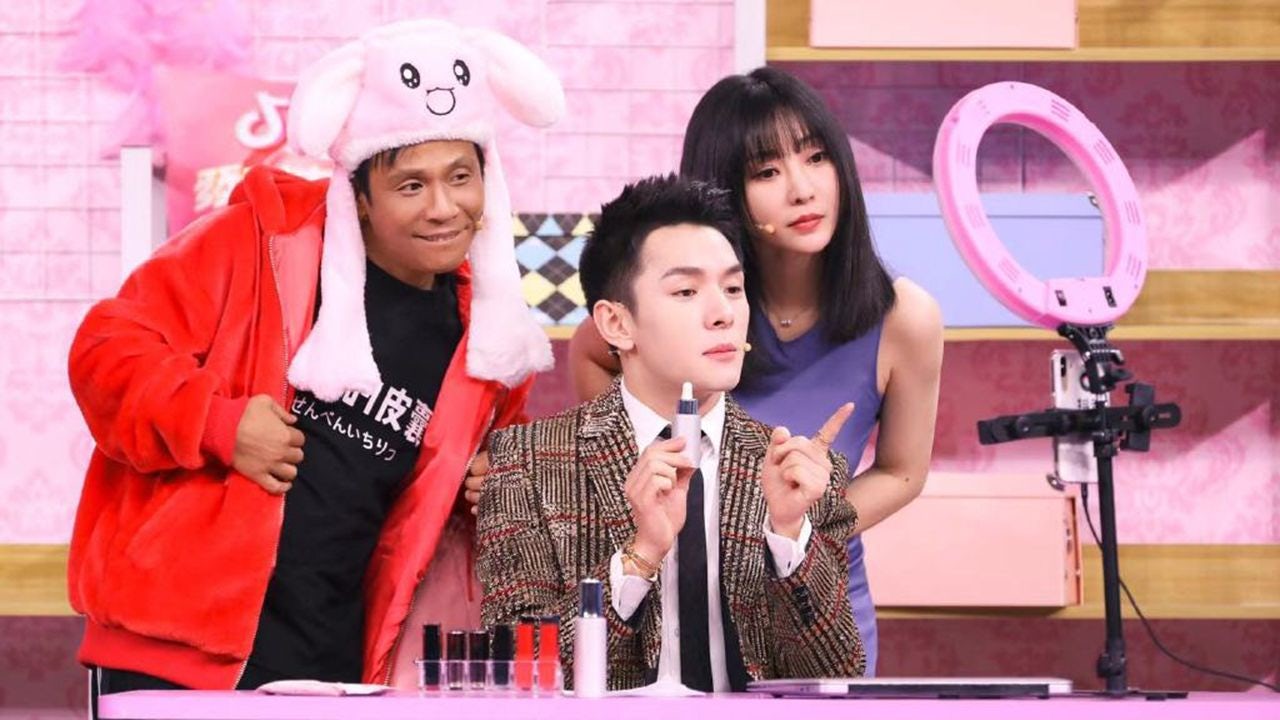Fashion blogging in China is much more exhausting than anywhere else in the world, according to Mr. Kira (@吉良先生), who is one of the original Weibo fashion bloggers. When Kira was invited to attend fashion events abroad, he and his fellow Chinese bloggers would have to go straight back to their hotel rooms to write their articles while non-Chinese influencers kept partying long into the night, he said.
Mr. Kira noted that most Western influencers only had to post pictures on social platforms like Instagram and write captions. “It’s fairly simple: [Chinese bloggers] have too many tasks, from video and photo shoots to promotional articles,” he said. “What we do is a lot more complicated.” The influencer, who has 1.32 million social media fans, founded the multi-channel network (MCN) agency Dramchic (撰虔文化) in 2017 and has cultivated a distinguished luxury client base that includes Louis Vuitton and Chanel.
Much like its massive network of KOLs, China’s MCN industry is a lot more complex than anything similar in the West. The CEO and chief analyst of iiMedia Research, Zhang Yi, told Jing Daily that the main reason for this boom is the country’s unique technology infrastructure. “Around late 2016 and 2017, with the popularization of 4G networks and WeChat official accounts, many bloggers and influencers realized that they needed to diversify their content so as to keep the followers’ attention,” Zhang said. In iiMedia’s MCN Industry Report, published this January, the firm estimated that there would be 28,000 MCNs in China this year, doubling in size from last year with a combined value of 3.4 billion (24.5 billion yuan).
As an agency that manages KOLs for brand marketing services, MCNs are the go-betweens or middlemen between brands and KOLs, and they work with the three top revenue streams in China: KOL marketing, commissions from platforms dependent on traffic, and e-commerce, according to iiMedia. But to some degree, MCNs can also be seen as the new public relations companies — with added extras. “They can do everything a PR company can do and more,” said Elijah Whaley, the chief marketing officer at PARKLU, which provides software and data intelligence for brands to identify suitable KOLs to hire.
Now that these bloggers own their own channels, an ever-growing number of entrepreneurial newcomers are changing the influencer landscape because of increased capabilities such as media buying. With this in mind, Jing Daily looks at how MCNs are changing the relationships between brands and KOLs in China. Moreover, we analyze where the industry is headed under uncertainties brought on by the COVID-19 pandemic.
Before COVID-19: How MCNs disrupt the relationship between brands and KOLs#
MCNs make it easier for brands and their agencies to manage KOL resources, as they no longer have to deal with the time-consuming task of sifting through hundreds of profiles. Back in 2018, Xie Yinglan, one of the most influential managers of bloggers in China and the founder of Butterfree Communications, told Jing Daily that she realized the demand for the MCN business when she was working as the media director at a digital agency where her job entailed, “reviewing more than a hundred KOLs at the request of a beauty brand.”
Thirty-seven-year-old Kira, who was once a blogger under Xie at Butterfree Communications, agreed with the labor-saving aspect of MCNs, adding that they could also provide more versatile content at a more competitive price. Kira’s MCN agency manages three other KOLs, each with different target audiences: Ray (@言武Ray) for fitness and lifestyle, Toni (@Toni雌和尚) for fashion and new moms, and Echo (@顾晨曦Echo), a prolific translator who specializes in high-fashion and perfume.
Having a centralized management model benefits all parties, Kira explained. “Before this, when brands approached us, they needed to work with us individually,” he said. “But if we are being put forward as a package, clients can get a better price, and we can come up with really creative content, like a video featuring all of us, or an interactive H5 page.” He gave an example of how all four bloggers under Dramchic made different targeted posts about Emporio Armani watches.

It can be argued that the industrialization of social influencers makes working relationships more productive by allowing influencers to focus on their work. In a document on a mid-sized MCN agency’s guidelines and prices for clients that was obtained by Jing Daily, there was a clause asking brands to provide them with a content brief at least six days before the publishing date that “cannot be changed once submitted.” It stated that clients could change the outline once and the draft twice, but anything beyond this preliminary agreement requires an added 500-yuan fee per extra change.
As MCNs become more and more ubiquitous, the price tags for KOL services go up, as brands also need to cover an agency fee. MCNs and KOLs usually do a 70/30 percent split, said Whaley. But since the industry is growing so fast, there are many poorly managed businesses that employ potentially hidden fees, especially when an MCN agency doesn’t have their own talent and must tap into another company. “By the time the customer sees the results, they might be twice as expensive as if they had gone directly to a KOL,” he noted.
Despite the aggressive ascent of MCNs, they haven’t completely disrupted the relationship between some KOLs and brands. A Chinese spokesperson at Valentino stated, “We’ve always been close with top KOLs without MCNs. They genuinely love our brands, and our relationship has long extended beyond work.” However, she said, the brand mainly works with mid-tier KOLs through MCNs because it’s hard to manage the high volume at that level.
Where MCNs are headed after COVID-19 and opportunities for brands#
MCN agencies also have its own Achilles heel. Despite receiving some initial interest from the capital market, it’s a challenging business to scale up. In 2014, Disney’s 675 million acquisition of the Youtube MCN Maker Studios (now the Disney Digital Network) injected some confidence into China’s investors, but many of them remain pessimistic about the money-making capabilities of MCNs.
“There’s not a lot of large investment into these firms, and most of the capital goes into the angel round or early rounds,” said iiMedia’s Zhang, adding that “it's hard for the industry to grow any giant firm.” And even for established MCNs, an expanding size doesn't necessarily equal increased revenues. The Alibaba-backed Ruhnn Holdings (如涵控股), for one, has been put to the test since being listed on the Nasdaq last April.
The company has been long dependent on its top KOL, Zhang Dayi (张大奕), who has over 34 million fans across different platforms. She’s been contributing over half of the company’s annual sales since its inception in late 2016, but the company’s reliance on her isn’t sustainable.
Over the last three years, Ruhnn’s operational costs have skyrocketed while its number of top KOLs — defined by the company as those who contributed 100 million in gross merchandising value or 10 million in advertising revenue — remained under ten. The recent negative coverage about Zhang’s personal life in April sent Ruhnn’s stock price further downhill, which sat at 3.00 by the time of this publishing — a 76-percent decrease from the IPO price of 12.5.
MCNs such as Ruhnn understand this dependency problem, but whether they can bag the next Zhang Dayi or not isn’t necessarily up to them. The nature of going viral is random, said Mo Liyang, the CEO of the top-tier MCN company Hive Media, on several occasions. Since their main revenue streams have become increasingly vulnerable, particularly during a pandemic, agencies are under an increasing amount of pressure to diversify.
But in recent months, the MCN industry has also come under severe governmental scrutiny. Last October, the MCN boom caught the eye of China’s Supreme People's Procuratorate — the highest national procuratorial agency — after Hive Media was accused of allegedly procuring fake data to boost impressions. The company responded in a statement that the accusation was false and that the company didn’t promise any conversions from social traffic.
And now the industry is facing external pressure. COVID-19 has forced brands into different strategies given the changes in marketing and advertising budgets, which has also affected MCN revenues.
Kira, whose agency was heavily affected through February and March, noted that luxury brands are bringing their budgets back to the China market as it bounces back. Yet he still expects at least two rounds of “reshuffling” because of COVID-19 as well as fierce competition during its aftermath — forcing brands to make more considered choices.
“MCNs can no longer just make up the number with a KOL who’s under-trained or just looks pretty because brands are placing higher standards on content,” he explained, also adding that another round of reshuffling could well happen next year when lesser MCNs close their doors.
Regardless of brands’ budget changes, iiMedia’s Zhang states that China’s MCN industry is still going strong. “In late 2018 and 2019, we saw many MCNs shifting their focus from simply making marketing materials to promoting their own e-commerce businesses,” he said. “So even when there’s a budget cut from the advertisers, it doesn’t affect the MCNs that mainly profit from directly selling products.”
Under these circumstances, the luxury sector, which has bolstered its digital steps since the COVID-19 outbreak, can continue to discover opportunities with MCNs in new territories. As the lockdown has taken away customers’ physical experience, many luxury brands have started livestreaming with mixed results, and this is one area where MCNs can help brands. “I think the level-up of MCNs and livestreaming e-commerce will be conducive for luxury,” Zhang said.
The probability of MCNs merging with e-commerce has already caught Alibaba’s attention. As Ruhnn’s second-largest shareholder, the e-commerce giant is now backing an MCN headed by former Taobao Live lead, Zhao Yuanyuan, who left his post this March, according to the Chinese tech media platform36Kr. Zhao, who declined to comment, ha launched his MCN under the name Yuanqi Culture (圆气文化).
E-commerce and livestreaming are currently China’s most buzzworthy trends. But, according to Kira, the ultimate test for MCNs lay in their blogging roots: Content. As he summarized, the largest challenge for MCNs is always predicting the content that netizens will want, and “those who can win are the ones who have talented content creators.”

